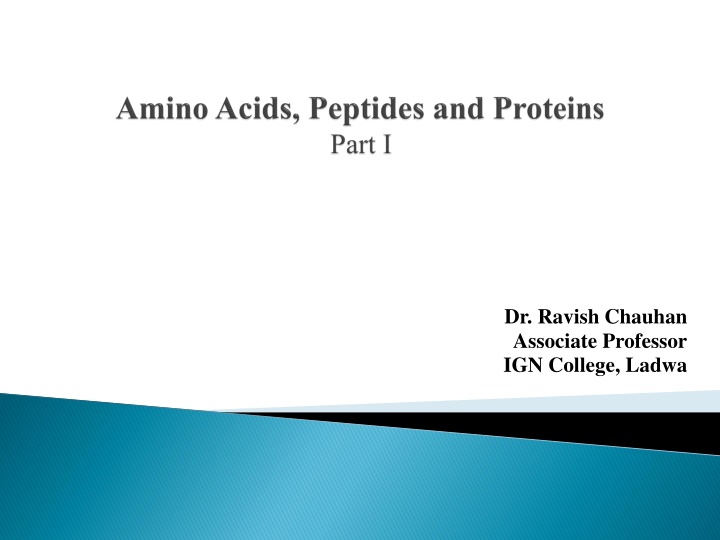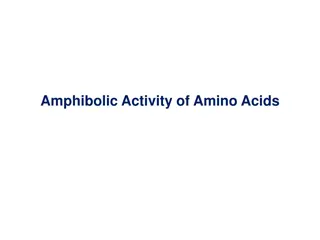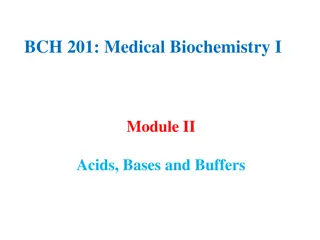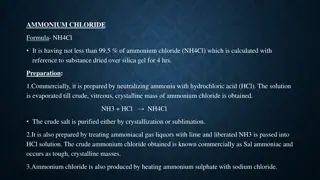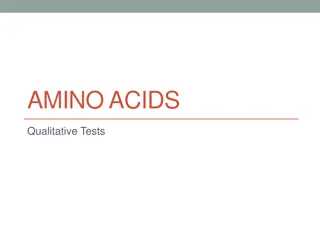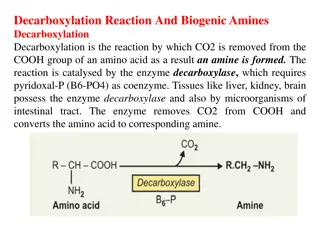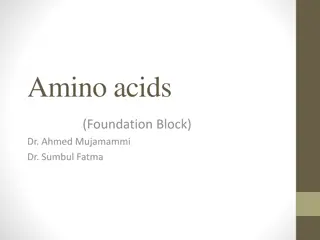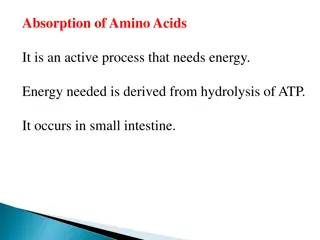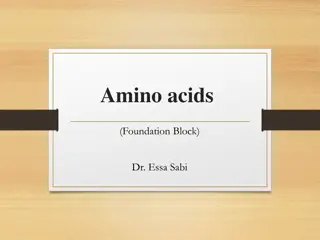Acid-Base Behaviour of Amino Acids: Substituted Ammonium Ion and Iso-electric Point
Amino acids exhibit either weak acid or weak base behavior based on their ka and kb values. The iso-electric point, where an amino acid doesn't migrate towards any electrode, is crucial. Learn about the cationic and anionic forms in equilibrium and the concept of pI. Glycine's pI lies at pH 6.1. Discover more about the fascinating acid-base properties of amino acids in this informative content.
Download Presentation

Please find below an Image/Link to download the presentation.
The content on the website is provided AS IS for your information and personal use only. It may not be sold, licensed, or shared on other websites without obtaining consent from the author.If you encounter any issues during the download, it is possible that the publisher has removed the file from their server.
You are allowed to download the files provided on this website for personal or commercial use, subject to the condition that they are used lawfully. All files are the property of their respective owners.
The content on the website is provided AS IS for your information and personal use only. It may not be sold, licensed, or shared on other websites without obtaining consent from the author.
E N D
Presentation Transcript
Dr. Ravish Chauhan Associate Professor IGN College, Ladwa
Acid-Base behaviour of Amino acids Act as weak acids (low ka) or weak bases (low kb): Substituted ammonium ion (+NH3) act as proton donor, acid and carboxylate ion (COO-) act as proton acceptor, base. Iso-electric Point of Amino acids The dipolar amino acid exist in equilibrium with anionic and cationic form. H3O+ R CH---COO- H3O+ R CH---COO- R CH---COOH | ==== | ====== | + NH3 OH-+ NH3 OH- Cationic form Dipolar ion Anionic form The pH at which the amino acid does not migrate towards any electrode is known as iso-electric point (pI) of amino acid. For glycine, isoelectric point is at p 6.1. At isoelectric point the solubility of amino acid is minimum. NH2
